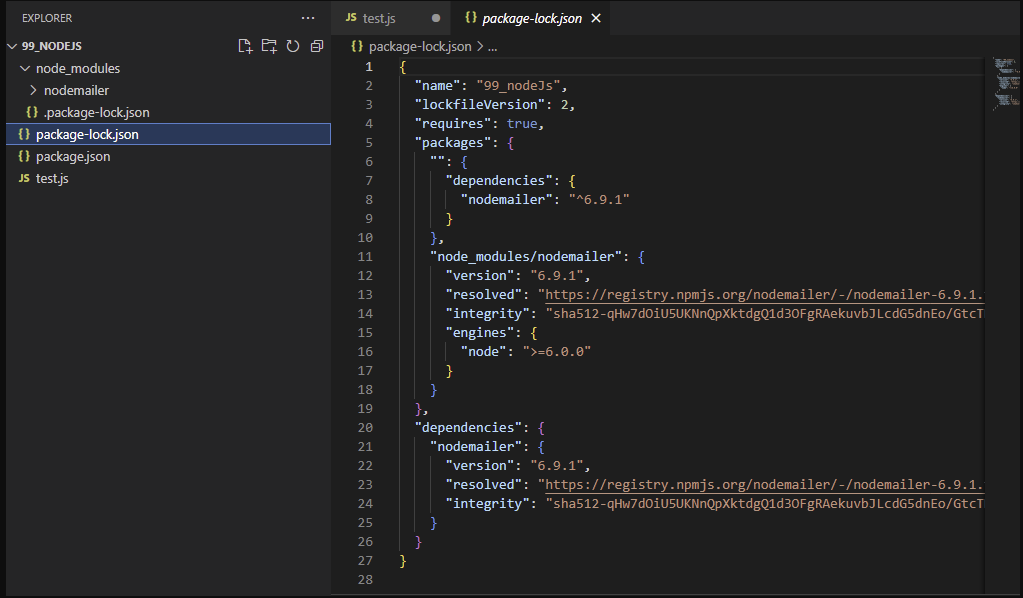Node.js 기본 개념
Table of contents
node.js 의 종류와 사용방법에 대해 정리한다.
참고 자료
Node.js 의 특징
javaScript를 이용한다.- 엄청나게 많은 패키지를 이용할 수 있다.
모듈 설치 및 실행
https://www.npmjs.com/ 에서 원하는 모듈을 찾는다.
npm install [모듈명] 으로 아래와 같이 설치한다.
nodemailer 라는 모듈을 예시로 든다.
D:\99_nodeJs>npm install nodemailer
added 1 package, and audited 2 packages in 1s
found 0 vulnerabilitie
아래 그림과 같이 node_modules, package json 파일 등이 생성된다.

require 를 이용해서 패키지를 불러온다.
const nodemailer = require('nodemailer');
실습 예제
이메일 전송하기
nodemailer 모듈을 사용한다.
const nodemailer = require('nodemailer');
const email= {
host: "smtp.mailtrap.io",
port: 2525,
auth: {
user: "80e8c610c6dace",
pass: "aad60e1f687512"
}
};
const send = async (option) => {
nodemailer.createTransport( email ).sendMail(option, (error, info) => {
if(error){
console.log(error)
} else {
console.log(info);
return info.response;
}
});
};
let email_data = {
from: "dmjgr5@gmail.com",
to: "dmjgr5@gmail.com",
subject: "테스트 메일입니다.",
text: "node.js 테스트입니다. "
}
send(email_data);
웹서버 만들기
express 모듈을 사용한다.
const express = require('express'); // 모듈 호출
const app = express();
const server = app.listen(3000, () => { //3000 번 포트로 지정
console.log('start server : localhost:3000');
});
app.set('views', __dirname + '/views');
app.set('view engine', 'ejs');
app.engine('html', require('ejs').renderFile);
app.get('/', function (req, res) {
res.render('index.html');
})
app.get('/about', function (req, res) {
res.render('about.html');
})
`node test.js’
MySQL 사용하기
npm install mysql --save 모듈을 사용한다.
const express = require('express'); // 모듈 호출
const app = express();
const server = app.listen(3000, () => { //3000 번 포트로 지정
console.log('start server : localhost:3000');
});
var mysql = require('mysql');
var pool = mysql.createPool({
host : '127.0.0.1',
user : 'root',
password : '',
database : 'yse_spring_mvc'
});
app.get('/db', function (req, res) {
pool.getConnection(function(err, connection) {
if (err) throw err; // not connected!
// Use the connection
connection.query('select 1+1 sum from dual', function (error, results, fields) {
res.send(JSON.stringify(results));
console.log('results', results);
// When done with the connection, release it.
connection.release();
// Handle error after the release.
if (error) throw error;
// Don't use the connection here, it has been returned to the pool.
});
});
})